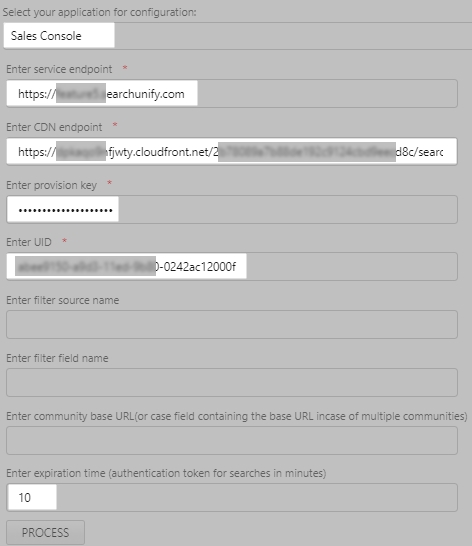Install a Search Client in Salesforce (Internal Users)
Find information faster right inside Salesforce (Sales Cloud, Service Cloud, and others) with SearchUnify. This article first explains how the search client for Internal users handles permissions and then takes you through the steps of installing and setting up a SearchUnify client in Salesforce.
Prerequisites
- Connection between the search client and at least one Salesforce content source
Create a Salesforce Internal Search Client
-
Create a Salesforce Internal Search Client.
-
Configure the Salesforce Internal search client.
Install the Search Client
- Visit Salesforce AppExchange and you will land on the SearchUnify - Unified Cognitive Platform for Salesforce app listing page. Click Get It Now.
- If prompted, log in with your Salesforce admin credentials.
- It's advisable to install an app on Sandbox, instead of Production.

- Install the app for All Users. A warning might come up. Overlook it and proceed with installation. In the end, an Installation Successful message will greet you.
Connect Salesforce Org with SearchUnify Instance
Process SearchUnify Package
The data flow between SearchUnify and your Salesforce org is managed through Remote Sites. Create two remote sites. The instructions are on Create Remote Sites in Salesforce.
Create Two Trusted URLs
You need to add your CDN endpoint and Service endpoint to Trusted URLs.
-
On the Setup page, use Quick Find Box to search Trusted URLs and click on it. Click New Trusted URL to create a new URL.

-
Enter a name into API Name field and use your CDN Endpoint given in the readme.txt file into the URL field. Make sure you use the CDN endpoint up to .net only (as shown in the image below).
-
Make sure to select all the CSP Directives options and click Save.
-
Similarly, create another Trusted URL using your Service Endpoint (your SearchUnify instance URL).
Add a CORS
If you use SearchUnify Cloud Edition, you have to add your CDN endpoint to CORS.
-
On the Setup page, use Quick Find Box to search CORS and click on it. Click New to create a cross-origin resource sharing URL.
-
Add your CDN Endpoint to Origin URL Pattern and press Save. Make sure you use the CDN endpoint up to .net only.
- Click Salesforce App Launcher and then View All.
- Find SearchUnify Configuration and click it open.
-
Select the installation location for the search in Choose search platform.
- Turn on CDN Support if you use the Cloud Edition. Turning on CDN Support improves speed but it also requires two extra settings:
During search client processing, you need a CDN endpoint which can be found in the readme file
For successful processing, you will have to create three remote sites instead of two. The website to be inserted in Remote Site URL can be found in the readme file
- Enter the details and click Process.
- Select your application for Configuration. The search client will be installed in the chosen application on Console, Community, or Visualforce. The field is absent when Internal is picked.
- Enter Service Endpoint. It is your SearchUnify instance URL.
- Enter CDN endpoint. The endpoint is in readme.
- Enter Provision Key. You can get it from your SearchUnify representative.
- Enter UID. It is your search client ID.
- Enter expiration time (authentication token for searches in minutes). Enter any integer. The suggested value is 120.

Processing can take up to a few minutes. Upon a successful processing, proceed with inserting the SearchUnify component to the case details page.
- Spot this message to confirm a successful configuration.
- From the app launch menu, go to SearchUnify Vf Internal.
- Click SearchUnifyInternal to launch the search client.
- Start searching.
Usage
To preview a result, hover the cursor over an article title and the preview is displayed in a pop-up window.
Note: Each preview counts as a conversion.

Fig. The preview of an article in the pop-up in Salesforce Internal.
















